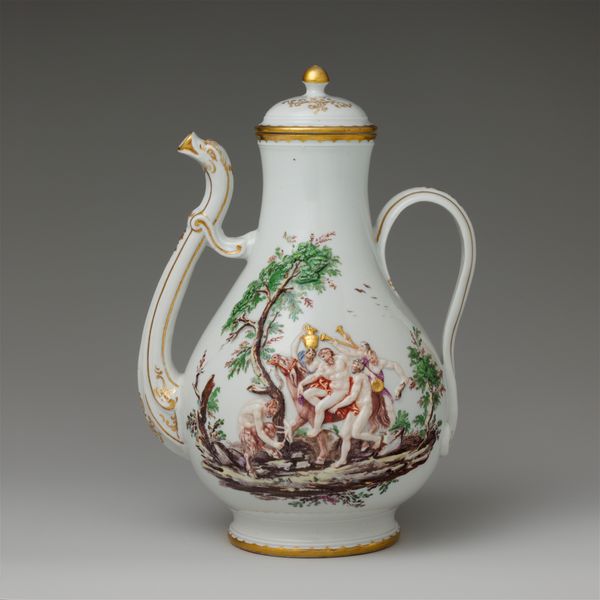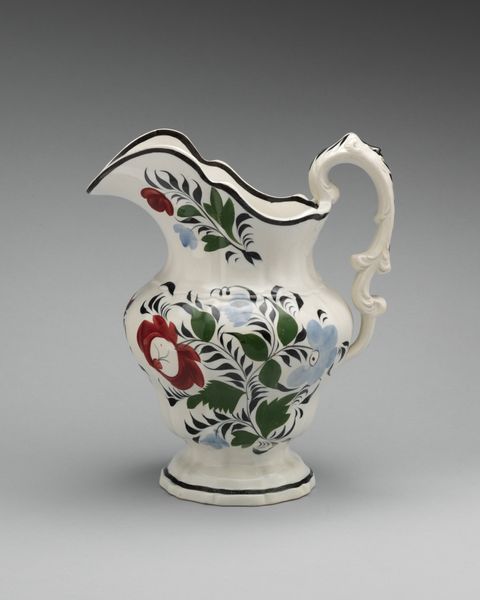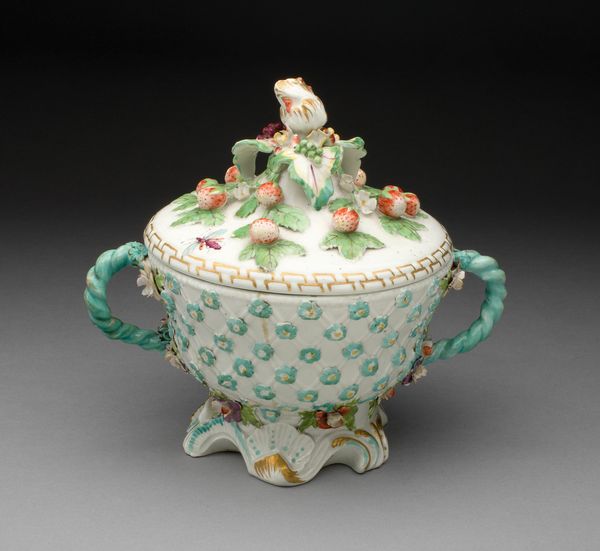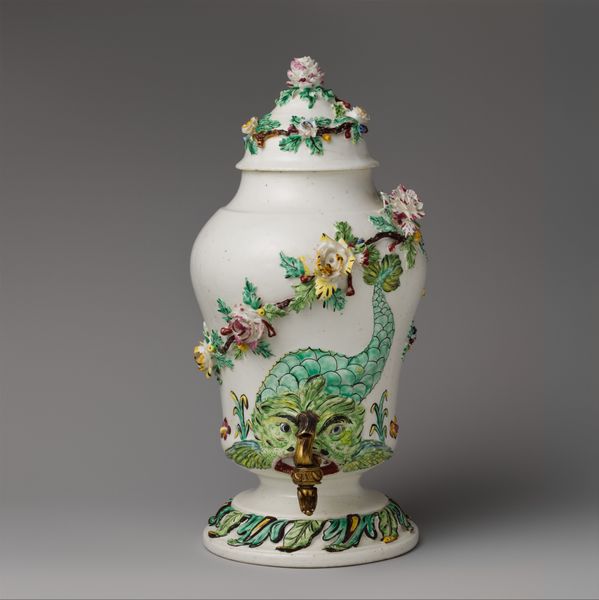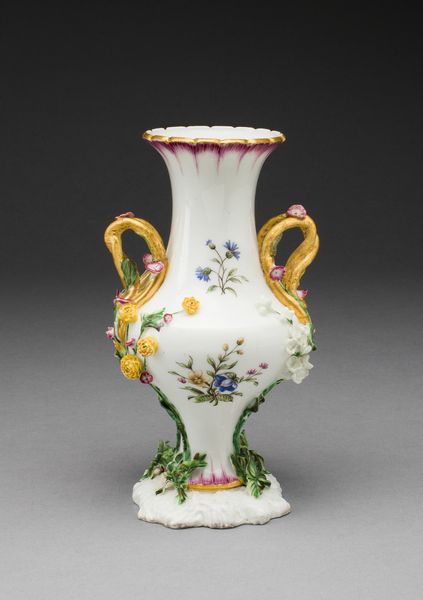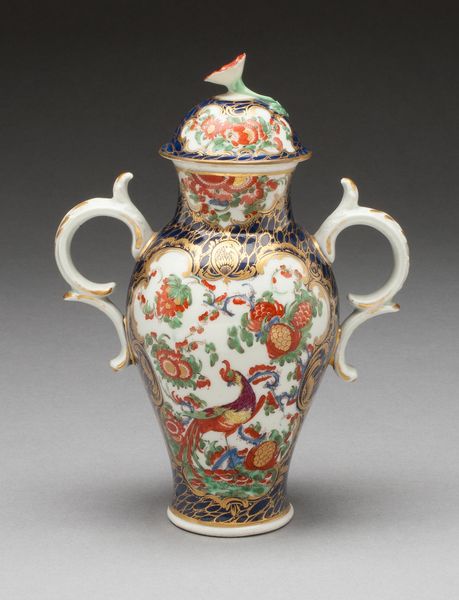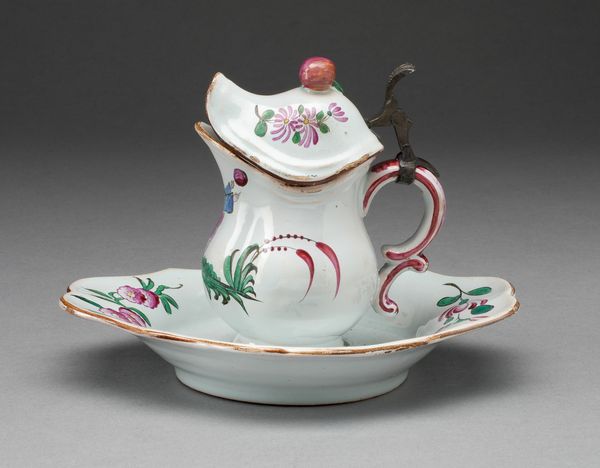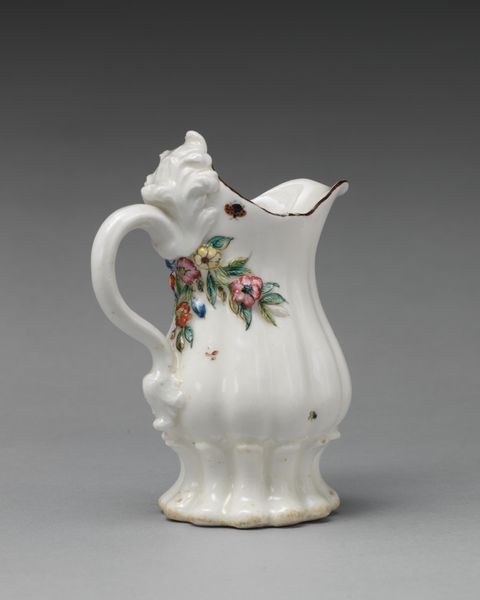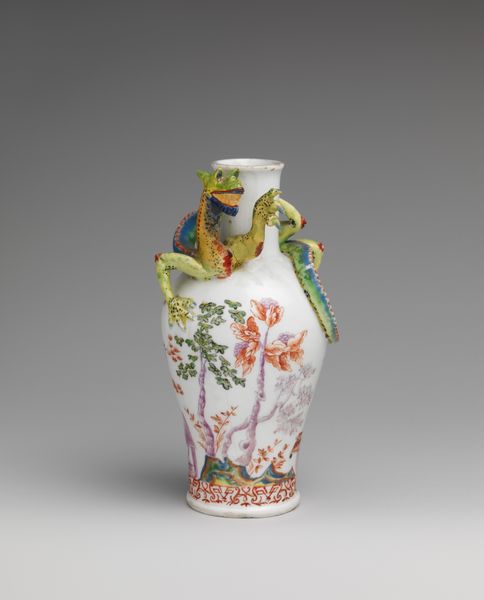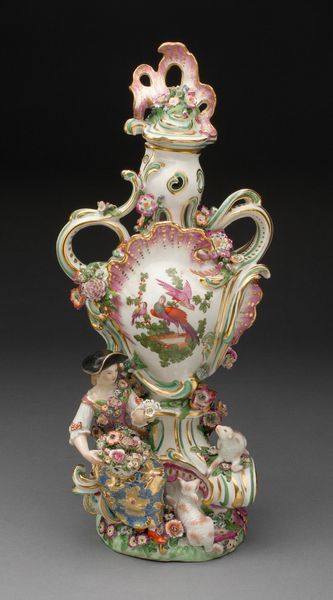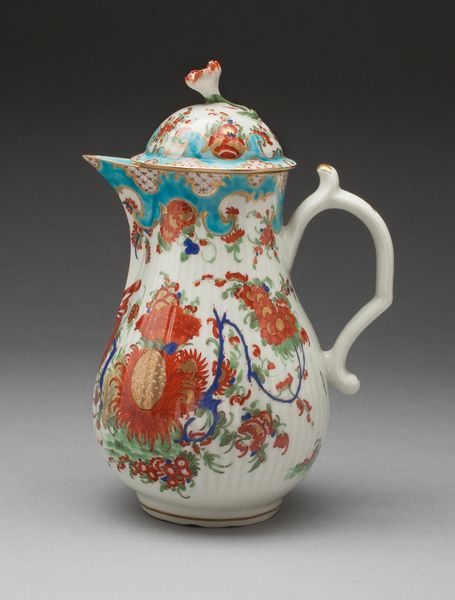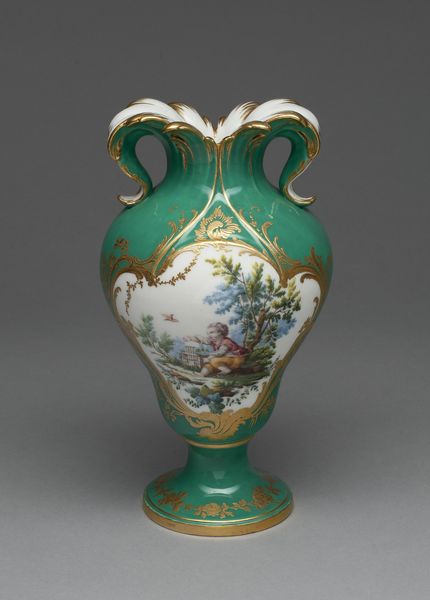
ceramic, porcelain
#
ceramic
#
porcelain
#
ceramic
#
decorative-art
#
rococo
Dimensions: H. 29 cm (11 1/16 in.)
Copyright: Public Domain
This porcelain ewer was produced by the Ginori manufactory in Sesto Fiorentino, Italy. We don't know when exactly, but we can still explore its relationship to broader social and cultural contexts. The ewer’s delicate floral decoration and elegant form reflect the 18th-century fashion for porcelain tableware among the European aristocracy. Ginori, like other porcelain factories of the time, was responding to and shaping a growing consumer culture around luxury goods. This period saw an increased emphasis on refined dining and entertaining as a means of displaying social status. The ewer is also embedded in a history of economic and political power, since the raw materials and production techniques for porcelain came from China, and European factories, like Ginori, attempted to replicate these coveted imports. To fully understand this object, a social historian would study the factory’s records, trace the circulation of porcelain within Europe, and investigate the complex relationship between artistic creation and market demand. This ewer offers insights into the intertwined histories of art, commerce, and social class.
Comments
No comments
Be the first to comment and join the conversation on the ultimate creative platform.
